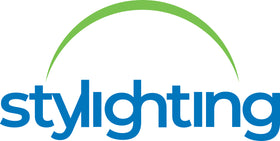Whether it’s a concert, nightclub, or live show, once the lights hit the stage, you immerse yourself in the show. Once it’s over and the stage lights are no longer dictating your emotions, you realize how bland standard theater or arena lighting can be. Professional event planners know using color theory for event lighting designs is as critical to the show as the entertainment act.
A Colorful Glass Case of Emotions
A common theory regarding communication is that most of it is non-verbal. If true, most individuals can figure out how someone feels without saying a word. Similarly, colors can tell a story without any scrolling text explaining the emotions you should feel. By using color theory for event lighting design, you can create the perfect ambiance to illicit powerful sentiments.
Before jumping into the nuts and bolts of an elaborate lighting setup, one should understand the common emotions we associate with colors. How colors affect people isn’t an absolute science, but generally, these are the feelings many people associate with various colors.
- White: Innocence, purity, and impartiality
- Red: Love, rage, intense emotion
- Blue: Respect, aloofness, melancholy
- Brown: Satiety and fullness
- Green: Health and prosperity
- Orange: Originality, comfort, high-energy
- Yellow: Happy, active, stimulating
- Purple: Pride, royalty, sadness
- Black: Authority, imminence, wrath
Tag-Team of Colors
Knowing where colors fall on a color wheel and how to combine them to create new colors is as important as learning the meanings of individual hues. However, using too many colors might cause overstimulation (unless your goal is to be as bombastic as possible).
Using a monochromatic color scheme introduces the meaning of a single hue with pinpoint precision. You can add nuance and subtle distinction by incorporating shades of that same color.
Complementary hues that are diametrically opposite on the color wheel may evoke a complex range of feelings. Consider the sentiments of joy and prosperity you can get from seeing red and green, which we often associate with the winter holidays and festivities.
When analogously using colors, one color links with the two colors on each side of the color wheel. An enhanced sense of a color’s connoted emotion and calmness arises since the resulting color scheme is usually easy on the eyes.
Take-Two and Make Something New
Thanks to our best friend Roy G. Biv throughout our school years, you probably know about fundamental colors already. Red, blue, and yellow are the three fundamental colors used to make paint and ink pigments. However, red, blue, and green (RGB) are the fundamental hues used in artificial lighting.
In the same way that blending pigments may get green, purple, and orange, combining light’s main colors can yield unexpected hues. For instance, a mixture of green and blue creates cyan, while magenta is a color made by mixing blue and red. It might shock you to learn that yellow light consists of two primary colors: red and green.
These color-mixing concepts and the physics of how light reflects color to our eyes create exciting displays using various lighting techniques.
Different colors emerge when objects reflect light of different wavelengths. There is a spectrum of color, from ultraviolet, which has the shortest wavelengths, to infrared, which has the longest. Objects absorb certain forms of energy and reflect others at the subatomic level.
White surfaces reflect all light, whereas black ones take it all in. Professionals use this to their benefit to create various color combination methods to generate more color palette choices.
Using color theory for event lighting design can turn a mundane setting into a beautiful one. Stylighting’s selection of light bulbs online can help you create the ideal atmosphere guided by color theory and our LEDucation!

